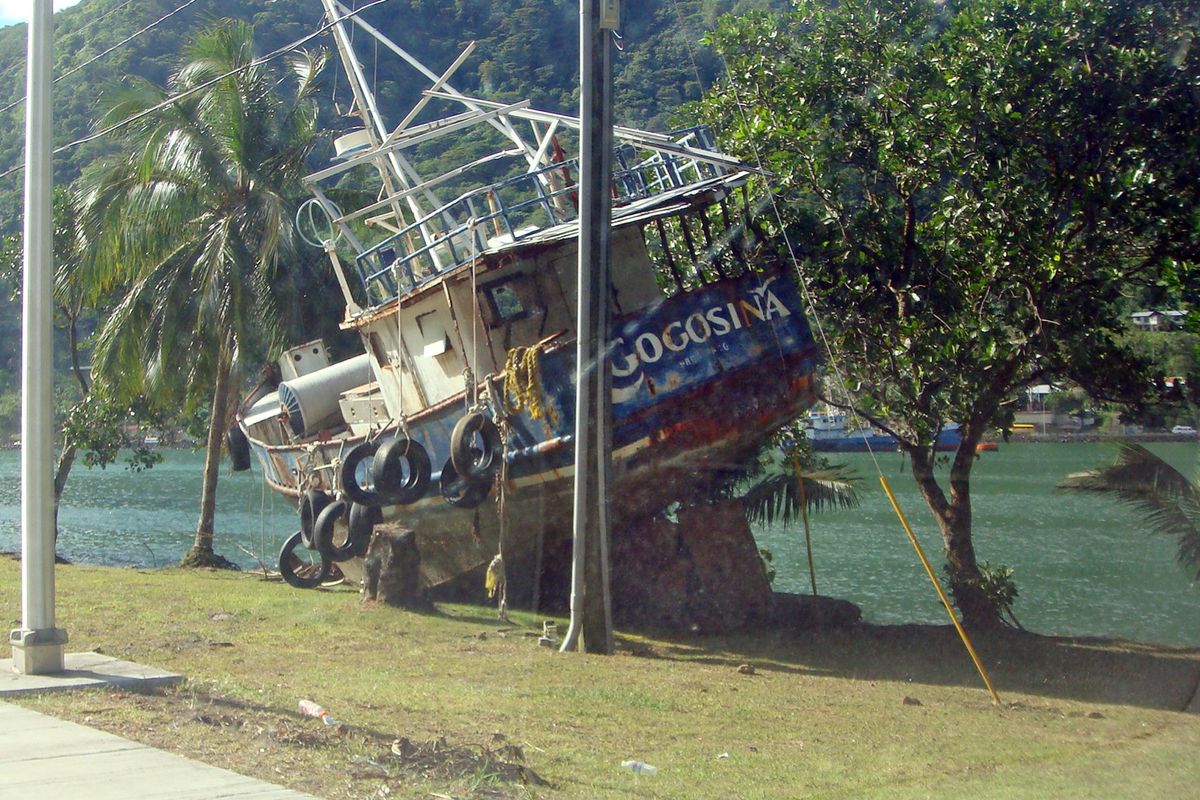Aid on the way to Samoa islands; at least 120 dead

APIA, Samoa – Police searched a ghastly landscape of mud-strewn streets, pulverized homes and bodies scattered in a swamp Wednesday as dazed survivors emerged from the muck and mire of an earthquake and tsunami that killed at least 120 in the South Pacific.
Military transports flew medical personnel, food, water and medicine to Samoa and American Samoa, both devastated by a tsunami triggered by an undersea earthquake. A cargo plane from New Zealand brought in a temporary morgue and a body identification team.
Officials expect the death toll to rise as more areas are searched. Among the hardest hit areas was the southeast coast of Samoa, with authorities reporting that several tourist resorts were wiped out.
Survivors fled to higher ground on the islands after the magnitude 8.0 quake struck at 6:48 a.m. local time. The residents then were engulfed by four tsunami waves 15 to 20 feet high that reached up to a mile inland.
The waves splintered houses and left cars and boats – many battered and upside down – scattered about the coastline. Debris as small as a spoon and as large as a piece of masonry weighing several tons was strewn in the mud.
Survivors told harrowing tales of encountering the deadly tsunami.
“I was scared. I was shocked,” said Didi Afuafi, 28, who was on a bus when the giant waves came ashore on American Samoa. “All the people on the bus were screaming, crying and trying to call their homes. We couldn’t get on cell phones. The phones just died on us. It was just crazy.”
The quake was centered about 120 miles south of the islands of Samoa, which has about 220,000 people, and American Samoa, a U.S. territory of 65,000.
While the earthquake and tsunami were big, they were not as large as the 2004 Indian Ocean tsunami that killed more than 230,000 in a dozen countries across Asia.